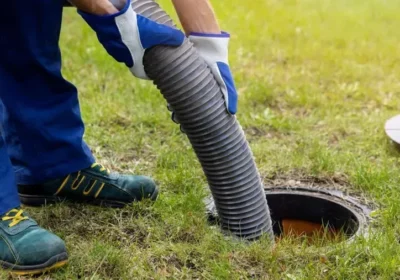Burying the Past: Strategies for Residential Oil Tank Removal
Beneath the serene landscapes of many homes, a silent relic from the past may be quietly posing potential risks – the residential underground oil tank. As homeowners recognize the importance of burying this environmental hazard, strategies for residential oil tank removal become imperative. In this comprehensive guide, we explore the reasons for removal, the strategic considerations involved, and the step-by-step process to bury the past responsibly.
1. The Imperative of Residential Oil Tank Removal: Unveiling the Risks
Residential underground oil tanks, installed decades ago for heating systems, were once a common feature. However, the passage of time renders these buried vessels susceptible to corrosion, leading to leaks that can contaminate soil and pose environmental and health risks. The imperative of residential oil tank removal lies in recognizing these potential hazards and taking proactive steps to mitigate them.
2. Strategic Considerations: Why Plan and Strategize?
Before embarking on the removal journey, homeowners must carefully plan and strategize the process. Strategic considerations ensure a smooth and efficient removal, minimizing disruptions and potential complications. Key factors to consider include:
Assessment of Tank Condition: A thorough assessment by qualified professionals to determine the tank’s condition, potential leaks, and overall integrity.
Regulatory Compliance: Understanding and complying with local regulations governing oil tank removal. This involves securing necessary permits and adhering to specific guidelines.
Environmental Impact: Strategizing to minimize the environmental impact of the removal process, including soil remediation if necessary.
Budgeting and Financial Planning: Anticipating and budgeting for the costs associated with removal, including permits, assessments, and potential remediation efforts.
Selection of Removal Specialists: Engaging professionals with expertise in both the technical aspects of removal and local regulations to guide the process.
Strategic planning sets the stage for a well-executed removal, ensuring that homeowners are equipped to bury the past responsibly.
3. Step-by-Step Guide to Residential Oil Tank Removal: Unveiling the Process
Professional Assessment:
Engage qualified professionals to conduct a thorough assessment of the underground oil tank. This includes visual inspections, leak testing, and an evaluation of the tank’s structural integrity.
Permit Acquisition:
Secure the necessary permits from local authorities before initiating any removal activities. Compliance with regulations is crucial for a legal and smooth removal process.
Tank Pumping and Cleaning:
Empty the tank of any remaining oil and conduct a thorough cleaning to minimize spill risks during removal. Specialized equipment is employed to ensure safe and efficient pumping.
Excavation:
Utilize heavy machinery for careful excavation, ensuring the tank is unearthed without damage. Precision is vital to prevent potential spills during the removal.
Tank Removal and Disposal:
Once exposed, the tank is removed from the site. Disposal follows strict environmental regulations to ensure responsible handling.
Soil Remediation:
If soil contamination is detected, initiate remediation efforts. This involves removing and replacing contaminated soil to restore environmental balance.
Verification and Documentation:
Conduct a final inspection to verify compliance with regulatory requirements. Keep comprehensive documentation, including permits and inspection reports, for reference.
4. The Role of Professionals: Why Expertise Matters
Residential oil tank removal is a complex process that demands the expertise of qualified professionals. Specialists familiar with both the technical aspects and regulatory landscape guide homeowners through the removal journey. Engaging professionals streamlines the process, minimizes stress, and ensures compliance with environmental regulations.
5. Environmental Impact: Minimizing the Footprint
Strategizing for residential oil tank removal includes a focus on minimizing the environmental footprint of the process. Timely detection and remediation of leaks contribute to the preservation of local ecosystems and groundwater. Responsible handling and disposal of removed tanks ensure that the environmental impact is kept to a minimum.
6. Post-Removal Considerations: Property Transformation and Assurance
As the residential oil tank removal journey concludes, the property undergoes a transformative process. What was once a potential environmental hazard is now safely removed and responsibly managed. Homeowners are left with the assurance that their property is free from the risks associated with aging underground oil tanks.
7. Financial Considerations: Budgeting for a Safe Transition
Understanding the financial aspects of residential oil tank removal is essential for homeowners. Budgeting should encompass not only the direct costs of removal but also potential expenses related to permits, environmental assessments, and soil remediation. Factoring in these costs ensures a smooth and financially sound transition from the past to a safer, cleaner property.
Conclusion:
Residential oil tank removal is not just about extracting a buried relic; it is a strategic and responsible process that involves careful planning, compliance with regulations, and environmental stewardship. By understanding the risks, strategizing for removal, and engaging in a systematic process, homeowners contribute to the health of the environment and the safety of their properties.
As the past is buried through the removal of aging underground oil tanks, homeowners embrace a transformation that paves the way for a safer, cleaner, and more environmentally conscious living space. In choosing to bury the past responsibly, homeowners ensure that their properties become free from potential environmental hazards, leaving a legacy of responsible property ownership for generations to come.










